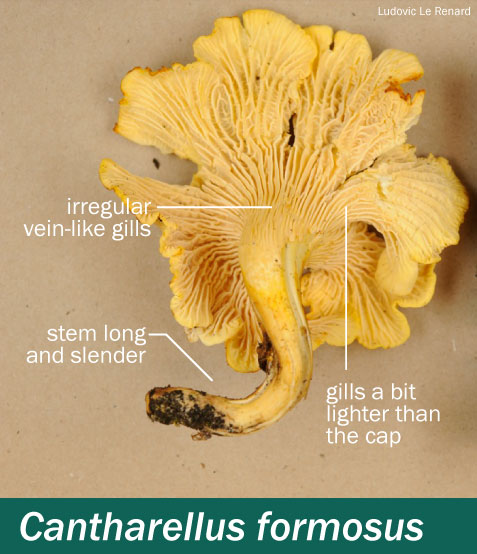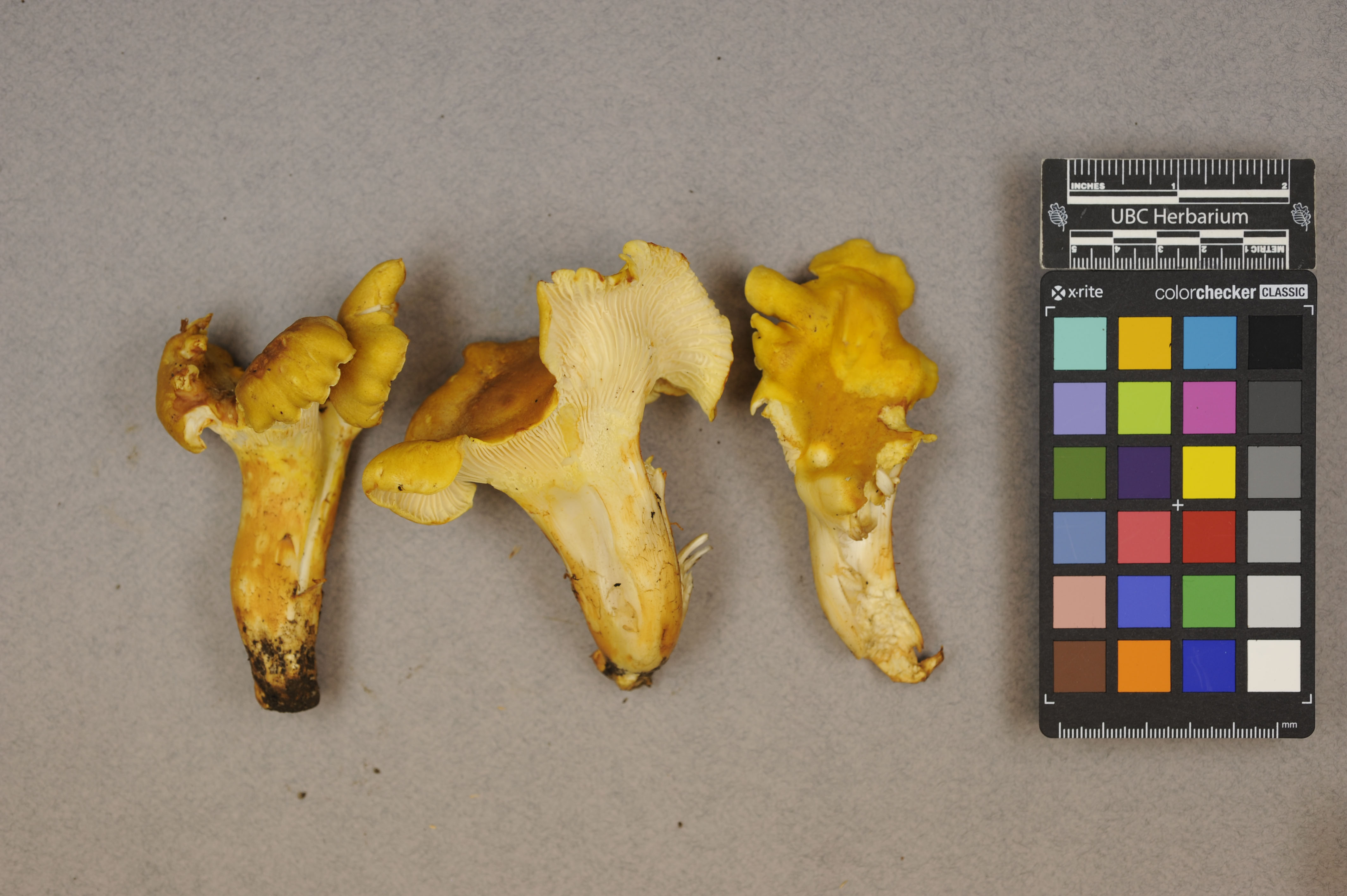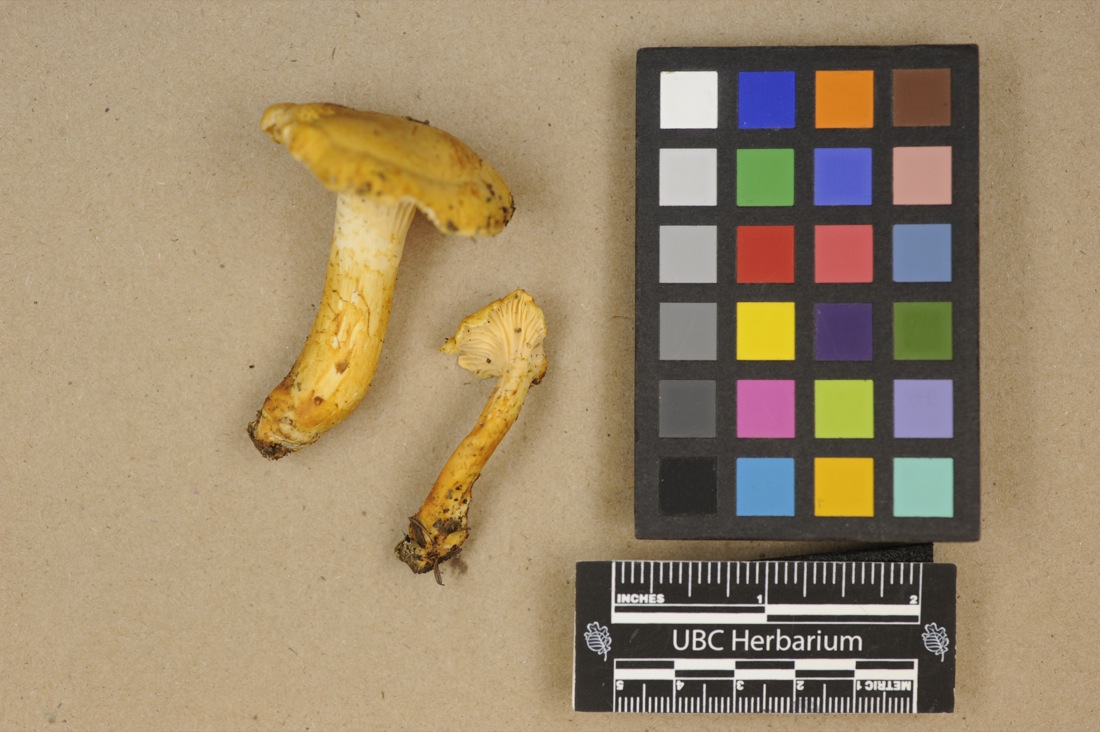Cantharellus formosus — Pacific golden chanterelle
Left image: Cantharellus formosus10, photograph by Ludovic Le Renard.
Right image: Cantharellus formosus11, photograph by Ludovic Le Renard.
Odour: Mild.
Taste: Delicate, slightly fruity or peppery.
Cap: 2.0–14 cm in diameter, convex when young, expanding to funnel shape or flattened with margins inrolled towards the stem with age. The colour is bright yellow or yellow-orange. The surface is dry.
Gills: Decurrent veins, appearing as ridges that run down from the underside of the cap onto the upper stem, easily peeled from cap. Chanterelle veins are thicker and further apart than the gills of most mushrooms and they fork and are connected by cross veins. The veins of the Pacific golden chanterelle are usually orangey yellow to salmon in colour, and paler than the cap. If bruised, they may change to yellow then ochre.
Stem: 4–8 cm long x 0.4–2.2 cm wide, cylindrical or tapering from top to bottom, coloured like the cap or slightly lighter and bruising yellow to ochraceous, fibrous. The surface is smooth.
Ring: None.
Cup: Absent.
Spores: 7–9.5 x 4.5–6.5 µm, smooth, broadly ovoid.
Habitat: On ground, associated with Douglas fir (Pseudotsuga menziesii), western hemlock (Tsuga heterophylla), Sitka spruce (Picea sitchensis) and occasionally, other conifers5. Ectomycorrhizal.
Geographical distribution: Widespread in BC and the Pacific northwest5.
Hygrophoropsis aurantiaca (false chanterelle) may be mildly poisonous6; it can be distinguished by its thinner gills that do not usually fuse with one another and that are brighter orange or yellow-orange compared with those of the Pacific golden chanterelle.
Omphalotus species, jack-o-lantern mushrooms, are poisonous, containing toxins including muscarine. Although jack-o-lantern mushrooms have been confused with chanterelles, they differ in that their gills are narrower and deeper and they grow from wood, not from the ground. Omphalotus has yet to be reported from BC and the few records from Oregon and Washington have yet to be verified9. Jack-o-lantern mushrooms have resulted in poisonings in California and if they become more common further north, they have the potential to cause accidental poisonings in the Pacific northwest and BC8.
Treatment: Contact your regional Poison Control Centre if you or someone you know is ill after eating chanterelles. Poison centres provide free, expert medical advice 24 hours a day, seven days a week. If possible, save the mushrooms or some of the leftover food containing the mushrooms to help confirm identification.
Poison Control:
British Columbia: 604-682-5050 or 1-800-567-8911.
United States (WA, OR, ID): 1-800-222-1222.



